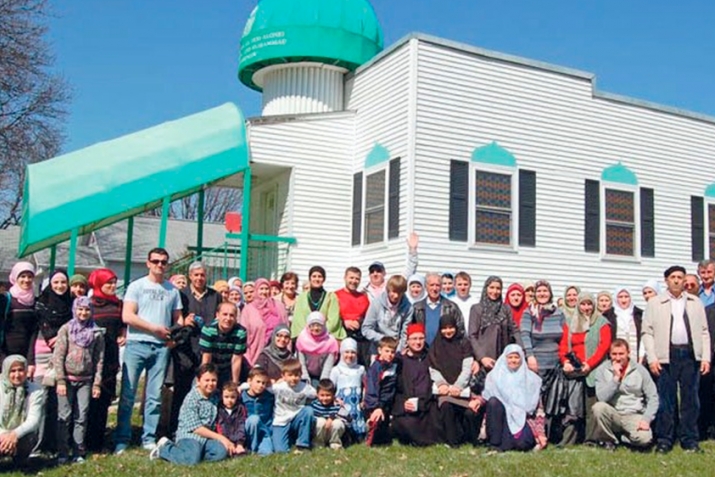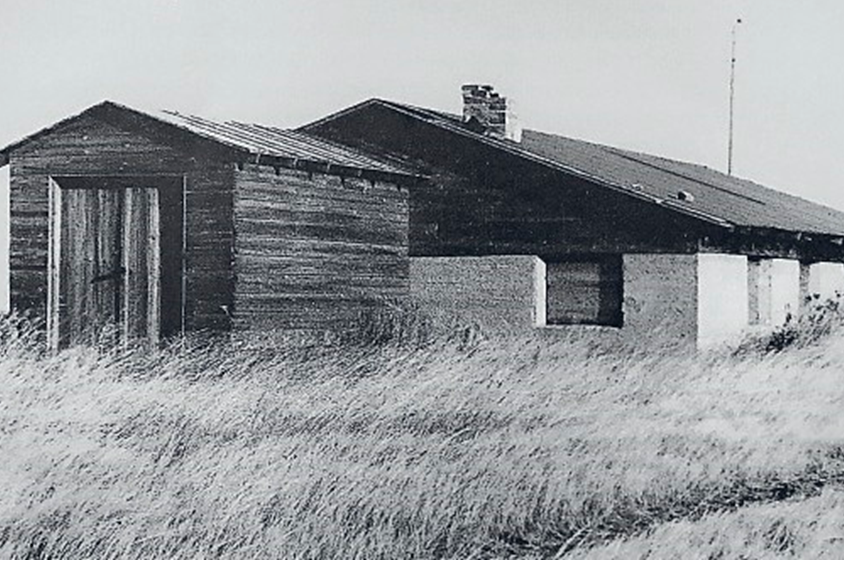The First Mosques in North America
In the 16th- early19th centuries, countless West African Muslims were forced to leave their homelands and transported to a lifetime of slavery in the European colonies of North America. They brought their faith with them – indeed not a few were educated alim and imams -which they practiced as best they could.They prayed in their slave quarters or in the fields where they toiled but were never permitted mosques in which to gather for worship. Following the final abolition of slavery in North America in 1865, this situation continued: although numbers of emancipated former Muslim slaves lived well into the 1930s, they were only ever able to pray in their domestic environments.

In the late 19th century and first decades of the 20th, other Muslims travelled across the Atlantic to the United States and Canada, this time propelled, not by compulsion, but by the freedom to seek new opportunities. One group was from Lebanon who were searching for work, while the other was from the Baltic regions, the first wave of which, together with their Jewish compatriots, was fleeing religious persecution. Both groups were classed as “white” (unlike Muslims from most other regions of Islam) and thus permitted entry by immigration authorities. They settled in cities and in rural communities and began to adapt themselves to a new society. In this process the venerable Islam institution of the mosque paid an important role as a familiar setting which provided community support and education as well as a place to worship.
The first mosque recorded to have been built in North America was outside the little rural community of Ross, North Dakota, USA in 1929; the creation of immigrants from Lebanon who first began arriving at the turn of the century with other pioneers to farm the prairies. The simple building was built semi-underground without any specific external Islamic features, the local Muslim graveyard developing around it. Demolished in the 1970s, it was later replaced in 2005 by the descendants of the original mosque builders by a tiny new building in a stereotypic Islamic style.
Situated in a quiet residential neighbourhood in rural Cedar Rapids, Iowa, USA, is the oldest surviving purpose-built mosque in North America. Also built in 1934 by Muslim settlers from Lebanon, it is commonly known as the Mother Mosque of America. This modest place of worship until a larger local mosque was built in 1971 when it was sold and gradually fell into disrepair. In 1991, the Islamic Council of Iowa purchased the building which was restored by the local community of believers to function once again as a flourishing centre of Muslim faith and community life.
The mosque is listed in the United States National Register of Historical Places (1996) and the State Historical Register of Iowa as an “essential piece of American religious history, which symbolizes tolerance and acceptance of Islam and Muslims in the United States”. The restoration of the early 1990s altered some of its original features, notably the dome over the entrance which comfortingly evoked the architecture of the original builders’ homelands.
In 1938, four years after the Cedar Rapids mosque was built, other Lebanese immigrants built the Al Rashid Mosque in Edmonton, Alberta, the first in Canada. It is a medium-sized red brick building with a gable roof and two modest minarets flanking its entrance. It is no longer in its original situation, having been relocated in 1991 to the open air museum of Fort Edmonton Park to save it from demolition after the opening of a much larger mosque of the same name in 1982. As the historic structure now stands, the form of its minarets has been changed and the original dome on top of the gable above the entrance is missing.
In 1931 – the Lithuanian Tatar Society (later known as the American Mohammedan Society), an immigrant community of Baltic Tatar Muslims, purchased a former Protestant church in Williamsburg,Brooklyn,asuburb of New York City, which they had been renting for worship and community gatherings for over a decade. Now their property, it was formally converted into the Brooklyn Moslem Mosque. For the Baltic Tatar congregation (coming from Belarus, Poland as well as Lithuania) the choice of such a building was natural: for centuries they had worshipped in wooden buildings of similar architectural form. All the church now needed was to panel its brick walls with wood and to place a small symbolic minaret turret with a crescent alem on the peak of its gable façade. The interior was also lined with wood, carpeted and provided with a minbar and a partition separating male and female worshippers.

The little Brooklyn mosque played an important role in the settlers’ transition to their new life. The historian, Tharik Hussain, who together with others in the now independent Baltic states, has done much to inform us of their precious Muslim cultural heritage, provides us with evocative recollections from the mosque’s congregation: “A lot of the people that came here sponsored one another, they lived in each other’s homes. They came not speaking English, and spoke a combination of Polish and Russian. It was very difficult for them to assimilate at that point, but the mosque helped. It was the ‘bridge.’” … “This was a group of people determined to make a life in the United States, and this mosque’s original purpose was to help and support one another, religiously and socially.”
In 1952, “The USA News Review” published an article which conveys the mosque congregation’s strong faith and community spirit: “The neighbourhood in Brooklyn, New York, in which the American Mohammedan Society’s mosque stands, is very much like thousands of others all over the United States. On all sides are modest, comfortable houses in which families live. …. In the evening the children play games on the sidewalk, running laughing and shouting, as they do all over the world. But some Friday evenings are different. Twenty or twenty five of these neighbourhood children are assembled in the mosque’s large, well-lighted lower room. Seated at long study tables, they are attentive and serious, for they are learning to read and write Arabic, so that they may understand the Koran, and follow the faith of their fathers. Before them are simple texts, and workbooks in which they are learning to form Arabic characters.” In later life one of these children recalled: “All the community would gather here. My mother didn’t drive and although we lived forty kilometres away, we would take a cab, a train, a bus and then walk just to be here. My father, who worked in Brooklyn, would then join us. The adults would have prayers and then the younger people would have classes. In the 1960s when I was growing up this place was packed. It was just unbelievable. We were very, very close. Everyone was an aunt or an uncle, even though they were not blood relatives. It was a very tight community.”
Soviet assumption of control over the Baltic states and Poland following World War II put a halt to any new arrivals from the Baltic Tatar homelands. During this difficult period the Brooklyn mosque served Baltic Muslims throughout the diaspora and their homelands as a reassuring symbol of hope and of the eternity of their faith. Today, although the Brooklyn Moslem Mosque is carefully maintained, it has no regular congregation: as the first generations of Baltic Muslims assimilated into American society, they moved elsewhere. It now opens mainly for the religious festivals of Eid-al-Fitr, Eid al-Adha and Ramadan and special cultural events.
In the 1930s, significant numbers of non-Muslim African Americans began to convert to Islam. In 1939, Daoud Ahmed Faisal, born in 1891 to a Muslim family of Caribbean and Moroccan background and who had immigrated to the United States as a young man, founded the Islamic Propagation Center of America in a former mansion at 143 State Street in Brooklyn Heights. In this building its State Street Mosque served as a major centre for Sunni Muslims in New York for many years.
Today, those who react against the erection of mosques in predominantly non-Muslim communities as provocative symbols of cultural alienation and sources of social discord do so in the face of the historical record: for early Muslim immigrant communities in Australia, Britain, Canada the United States of America and elsewhere, their local mosques served as modest loci of integration which instilled Islamic values of justice, hard work, social harmony and collaboration–bridgesfacilitating the transition between old and new homelands and cultures - and not of segregation.
GUY (GHAYDAR) PETHERBRIDGE PROFESSOR, EXPERT ON CULTURAL HERITAGE AND HISTORY OF ISLAM, AUSTRALIA, RUSSIA


